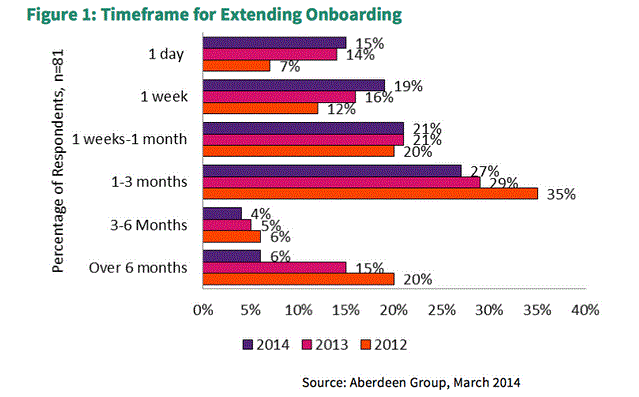5 Reasons Why Companies Should Care About the Pre-Join Period
Shankar Ganapathy
on
October 24, 2016
It is estimated that 46 percent of newly hired employees fail within 18 months. Although it may seem like all of the territories in new hire onboarding has been fully explored and mapped out, the pre-join period is still uncharted territory that human resources professionals may be overlooking.
According to a recent Aberdeen report, Engaging Your New Hires on Day 1, the onboarding experience is typically black or white for your new hire. Either it is positive or it is negative. When onboarding goes well, your new hire is energized, motivated, and eager to go forth and perform.
On the regrettable flipside, with a negative experience, they may feel resentful and start to question their decision to join the organization.
You don’t want that to happen. This is where having a strong pre-join plan for your new hires can come in handy. A strong pre-join experience addresses the earliest stage of engagement with your new employee when they are forming an initial opinion about your organization.
“Investing in the pre-join experience is a great opportunity to invest in your new hires.” Todd Raphael, Chief editor, ere.net
What is the “pre-join” period?
“Pre-join” refers to the period between the day a new employee accepts an offer to the day he or she shows up at the office for the first day of work. This period could be anywhere from 2-4 weeks to 6-9 months, in the case of campus hires where job offers are extended while the student is still in school. The same Aberdeen report shows that 37% of companies extend their programs beyond the first month. For these companies, “onboarding is regressing rather than advancing.”

Why should your organization implement a pre-join program?
The pre-join period represents a huge missed opportunity for most organizations, as they fail to recognize the value that an organized pre-join program can offer in terms of employee recruitment, retention, and productivity. Read on as we break down the top reasons for implementing a pre-join program for training and engaging new hires.
1. Pre-join programs reduce employee dropout rate
There’s a lot that can happen between the day that a prospective employee accepts an offer and their first day on the job. In particular, when there are several weeks or months leading up to their start date, people can receive other job offers or simply change their minds about joining your company.
An organized pre-join program can help mitigate these risks by making new hires feel like they are already part of your organization. By having their training program start before their official start date, employees are more likely to feel a bond with your organization, empowered by the fact that they’re going to be starting day 1 with weeks (or even months) of training experience under their belt.
In one impressive example, a $5 billion dollar IT company reduced pre-join churn by about 90% using Mindtickle’s gamified learning platform.
2. Pre-join programs aid in successful employee placement
You can learn a lot about a new hire’s interests, strengths, and weaknesses through their performance in pre-join programs. This information can then be used in identifying areas of improvement to be addressed, as well as determining optimal employee placement in your organization.
For example, new hires that do well on modules pertaining to soft skills could be put in customer-facing roles, while those that excel in technical skills could be placed on technology projects.
3. Pre-join programs improve employee engagement beyond day 1
A successful pre-join program helps to validate a new recruit’s decision to join your company. This does more than prevent them from going to a competitor or dropping your offer before joining but extends its value beyond day 1 and well into their tenure.
In the words of Naveen Narayanan, Global Head of Talent Acquisition at HCL Technologies, “Pre-employment engagement plays a significant part in bringing down the renege scores and enable the new joiners to get a 360 view of the company. Prospective employees feel valued and this gives the candidates the impetus and drive to excel post joining.”
4. Pre-join programs reduce the time it takes employees to become productive
There is a gap of time between an employee’s first day on the job and when they start being a productive member of the organization. According to Michael Watkins’ book “The First 90 Days”, the break-even point when a new hire starts being profitable is at 6.2 months from their start date.
This gap can be reduced by employing a pre-join program that brings new hires up to speed on technical skills and company values, allowing for a more seamless integration into their new role and the corporate culture. This allows for a quicker transformation of a new hire from an expense into an asset to your organization.
5. Pre-join programs can be a source of competitive advantage
An effective pre-join program can contribute to a company’s bottom line in a number of ways. From a cost savings standpoint, an organization benefits from lower drop-out and retention rates that mitigate the need for additional recruitment efforts.
A strong pre-join program also impacts a company’s profits, with employees being able to contribute business value faster – of particular impact when looking at training sales teams.


